I am using a Python client with paho-mqtt to publish in this specific topic of Google Cloud IoT: projects/my_project/topics/sm1. My code is below, based on examples of the Google IoT documentation:
import paho.mqtt.client as mqtt
import ssl, random, jwt_maker
from time import sleep
root_ca = './../roots.pem'
public_crt = './../my_cert.pem'
private_key = './../my_pr.pem'
mqtt_url = "mqtt.googleapis.com"
mqtt_port = 8883
mqtt_topic = "/projects/my_project/topics/sm1"
project_id = "my_project"
cloud_region = "us-central1"
registry_id = "sm1"
device_id = "sm1"
connflag = False
def error_str(rc):
"""Convert a Paho error to a human readable string."""
return "Some error occurred. {}: {}".format(rc, mqtt.error_string(rc))
def on_disconnect(unused_client, unused_userdata, rc):
"""Paho callback for when a device disconnects."""
print("on_disconnect", error_str(rc))
def on_connect(client, userdata, flags, response_code):
global connflag
connflag = True
print("Connected with status: {0}".format(response_code))
def on_publish(client, userdata, mid):
print("User data: {0} -- mid: {1}".format(userdata, mid))
#client.disconnect()
if __name__ == "__main__":
client = mqtt.Client("projects/{}/locations/{}/registries/{}/devices/{}".format(
project_id,
cloud_region,
registry_id,
device_id))
client.username_pw_set(username='unused',
password=jwt_maker.create_jwt(project_id,
private_key,
algorithm="RS256"))
client.tls_set(root_ca,
certfile = public_crt,
keyfile = private_key,
cert_reqs = ssl.CERT_REQUIRED,
tls_version = ssl.PROTOCOL_TLSv1_2,
ciphers = None)
client.on_connect = on_connect
client.on_publish = on_publish
client.on_disconnect = on_disconnect
print("Connecting to Google IoT Broker...")
client.connect(mqtt_url, mqtt_port, keepalive=60)
client.loop_start()
while True:
sleep(0.5)
print connflag
if connflag == True:
print("Publishing...")
ap_measurement = random.uniform(25.0, 150.0)
#payload = "sm1/sm1-payload-{}".format(ap_measurement)
res = client.publish(mqtt_topic, ap_measurement, qos=1)
if not res.is_published():
print("Data not published!!")
else:
print("ActivePower published: %.2f" % ap_measurement)
else:
print("Waiting for connection...")
When I run, the client connect but does not publish. At Google IoT Console, I can see the following error message:
Invalid MQTT publish topic: projects/my_project/topics/sm1
And here is the output:
Connecting to Google IoT Broker...
Connected with status: 0 -- msg: Connection Accepted.
True
Publishing...
Data not published!!
('on_disconnect', 'Some error occurred. 1: Out of memory.')
It is really strange, because the topic is there, created, and have a subscription associated to it!
Any help will be appreciated. I already read the following documentation and code:
